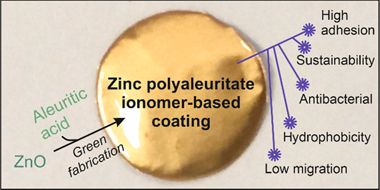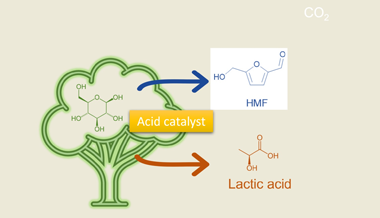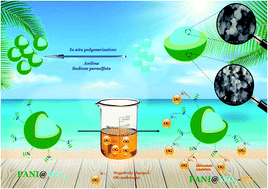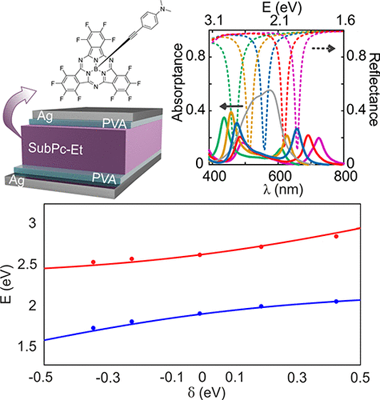Scientific Papers in SCI
2021
2021
Materiales de Diseño para la Energía y Medioambiente
Zinc Polyaleuritate Ionomer Coatings as a Sustainable, Alternative Technology for Bisphenol A-Free Metal Packaging
Morselli, D; Cataldi, P; Paul, UC; Ceseracciu, L; Benitez, JJ; Scarpellini, A; Guzman-Puyol, S; Heredia, A; Valentini, P; Pompa, PP; Marrero-López, D; Athanassiou, A; Heredia-Guerrero, AACS Sustainable Chemistry & Engineering, 9 (2021) 15484-15495
Show abstract ▽

Sustainable coatings for metal food packaging were prepared from ZnO nanoparticles (obtained by the thermal decomposition of zinc acetate) and a naturally occurring polyhydroxylated fatty acid named aleuritic (or 9,10,16-trihydroxy-hexadecanoic) acid. Both components reacted, originating under specific conditions zinc polyaleuritate ionomers. The polymerization of aleuritic acid into polyaleuritate by a solvent-free, melt polycondensation reaction was investigated at different times (15, 30, 45, and 60 min), temperatures (140, 160, 180, and 200 degrees C), and proportions of zinc oxide and aleuritic acid (0:100, 5:95, 10:90, and 50:50, w/w). Kinetic rate constants calculated by infrared spectroscopy decreased with the amount of Zn due to the consumption of reactive carboxyl groups, while the activation energy of the polymerization decreased as a consequence of the catalyst effect of the metal. The adhesion and hardness of coatings were determined from scratch tests, obtaining values similar to robust polymers with high adherence. Water contact angles were typical of hydrophobic materials with values >= 94 degrees. Both mechanical properties and wettability were better than those of bisphenol A (BPA)-based resins and most likely are related to the low migration values determined using a hydrophilic food simulant. The presence of zinc provided a certain degree of antibacterial properties. The performance of the coatings against corrosion was studied by electrochemical impedance spectroscopy at different immersion times in an aqueous solution of NaCl. Considering the features of these biobased lacquers, they can be potential materials for bisphenol A-free metal packaging.
November, 2021 | DOI: 10.1021/acssuschemeng.1c04815
Nanotecnología en Superficies y Plasma
Recent Advances in Alkaline Exchange Membrane Water Electrolysis and Electrode Manufacturing
Lopez-Fernandez, E; Sacedon, CG; Gil-Rostra, J; Yubero, F; Gonzalez-Elipe, AR; De Lucas-Consuegra, AMolecules, 26 (2021) 6326
Show abstract ▽
Water electrolysis to obtain hydrogen in combination with intermittent renewable energy resources is an emerging sustainable alternative to fossil fuels. Among the available electrolyzer technologies, anion exchange membrane water electrolysis (AEMWE) has been paid much attention because of its advantageous behavior compared to other more traditional approaches such as solid oxide electrolyzer cells, and alkaline or proton exchange membrane water electrolyzers. Recently, very promising results have been obtained in the AEMWE technology. This review paper is focused on recent advances in membrane electrode assembly components, paying particular attention to the preparation methods for catalyst coated on gas diffusion layers, which has not been previously reported in the literature for this type of electrolyzers. The most successful methodologies utilized for the preparation of catalysts, including co-precipitation, electrodeposition, sol-gel, hydrothermal, chemical vapor deposition, atomic layer deposition, ion beam sputtering, and magnetron sputtering deposition techniques, have been detailed. Besides a description of these procedures, in this review, we also present a critical appraisal of the efficiency of the water electrolysis carried out with cells fitted with electrodes prepared with these procedures. Based on this analysis, a critical comparison of cell performance is carried out, and future prospects and expected developments of the AEMWE are discussed.
November, 2021 | DOI: 10.3390/molecules26216326
Química de Superficies y Catálisis
Recent Advances in the Bronsted/Lewis Acid Catalyzed Conversion of Glucose to HMF and Lactic Acid: Pathways toward Bio-Based Plastics
Megias-Sayago, C; Navarro-Jaen, S; Drault, F; Ivanova, SCatalysts, 11 (2021) 1395
Show abstract ▽

One of the most trending topics in catalysis recently is the use of renewable sources and/or non-waste technologies to generate products with high added value. That is why, the present review resumes the advances in catalyst design for biomass chemical valorization. The variety of involved reactions and functionality of obtained molecules requires the use of multifunctional catalyst able to increase the efficiency and selectivity of the selected process. The use of glucose as platform molecule is proposed here and its use as starting point for biobased plastics production is revised with special attention paid to the proposed tandem Bronsted/Lewis acid catalysts.
November, 2021 | DOI: 10.3390/catal11111395
Fotocatálisis Heterogénea: Aplicaciones
Polyaniline coated tungsten trioxide as an effective adsorbent for the removal of orange G dye from aqueous media
Hsini, A.; Naciri, Y.; Bouziani, A.; Aarab, N.; Essekri, A; Imgharn, A.; Laabd. M.; Navío, J.A.;Puga, F.; Lakhmirid, R.; Albourine, A.RSC Advances, 11 (2021) 31272-31283
Show abstract ▽

In this work, the core–shell PANI@WO3 composite was obtained from the reaction of aniline monomer polymerization with WO3 particles; sodium persulfate was used as an oxidant. Various analytical techniques such as scanning electron microscopy (SEM-EDS), X-ray diffraction (XRD), Fourier transform infrared spectroscopy (FTIR), Brunauer–Emmett–Teller (BET), and X-ray photoelectron spectroscopy (XPS) were used to characterize the as-prepared PANI@WO3 adsorbent, which well confirmed that the WO3 particles were coated by polyaniline polymer. The PANI@WO3 composite was tested as an adsorbent to remove reactive orange G (OG) for the first time. pH, adsorbent dose, contact time, initial dye concentration, and temperature were systematically investigated in order to study their effect on the adsorption process. The experimental findings showed that the PANI@WO3 composite has considerable potential to remove an aqueous OG dye. Langmuir and Freundlich's models were used to analyze the equilibrium isotherms of OG dye adsorption on the PANI@WO3 composite. As a result, the best correlation of the experimental data was provided by the Langmuir model, and the maximum capacity of adsorption was 226.50 mg g−1. From a thermodynamic point of view, the OG dye adsorption process occurred spontaneously and endothermically. Importantly, PANI@WO3 still exhibited an excellent adsorption capability after four regeneration cycles, indicating the potential reusability of the PANI@WO3 composite. These results indicate that the as prepared PANI@WO3 composite could be employed as an efficient adsorbent and was much better than the parent material adsorption of OG dye.
November, 2021 | DOI: 10.1039/D1RA04135E
Materiales Ópticos Multifuncionales
Ultrastrong Exciton-Photon Coupling in Broadband Solar Absorbers
Bujalance, C; Esteso, V; Calio, L; Lavarda, G; Torres, T; Feist, J; Garcia-Vidal, FJ; Bottari, G; Miguez, HJournal of Physical Chemistry Letters, 12 (2021) 10706-10712
Show abstract ▽

The recent development of organic polaritonic solar cells, in which sunlight absorbers and photon modes of a resonator are hybridized as a result of their strong coupling, has revealed the potential this interaction offers to control and enhance the performance of these devices. In this approach, the photovoltaic cell is built in such a way that it also behaves as an optical cavity supporting spectrally well-defined resonances, which match the broad absorption bands of the dyes employed. Herein we focus on the experimental and theoretical analysis of the specific spectral and angular optical absorption characteristics of a broadband light harvester, namely a subphthalocyanine, when operating in the ultrastrong coupling regime. We discuss the implications of having a broad distribution of oscillator strengths and demonstrate that rational design of the layered structure is needed to optimize both the spectral and the angular response of the sunlight harvester dye.
November, 2021 | DOI: 10.1021/acs.jpclett.1c02898
- ‹ previous
- 65 of 412
- next ›














